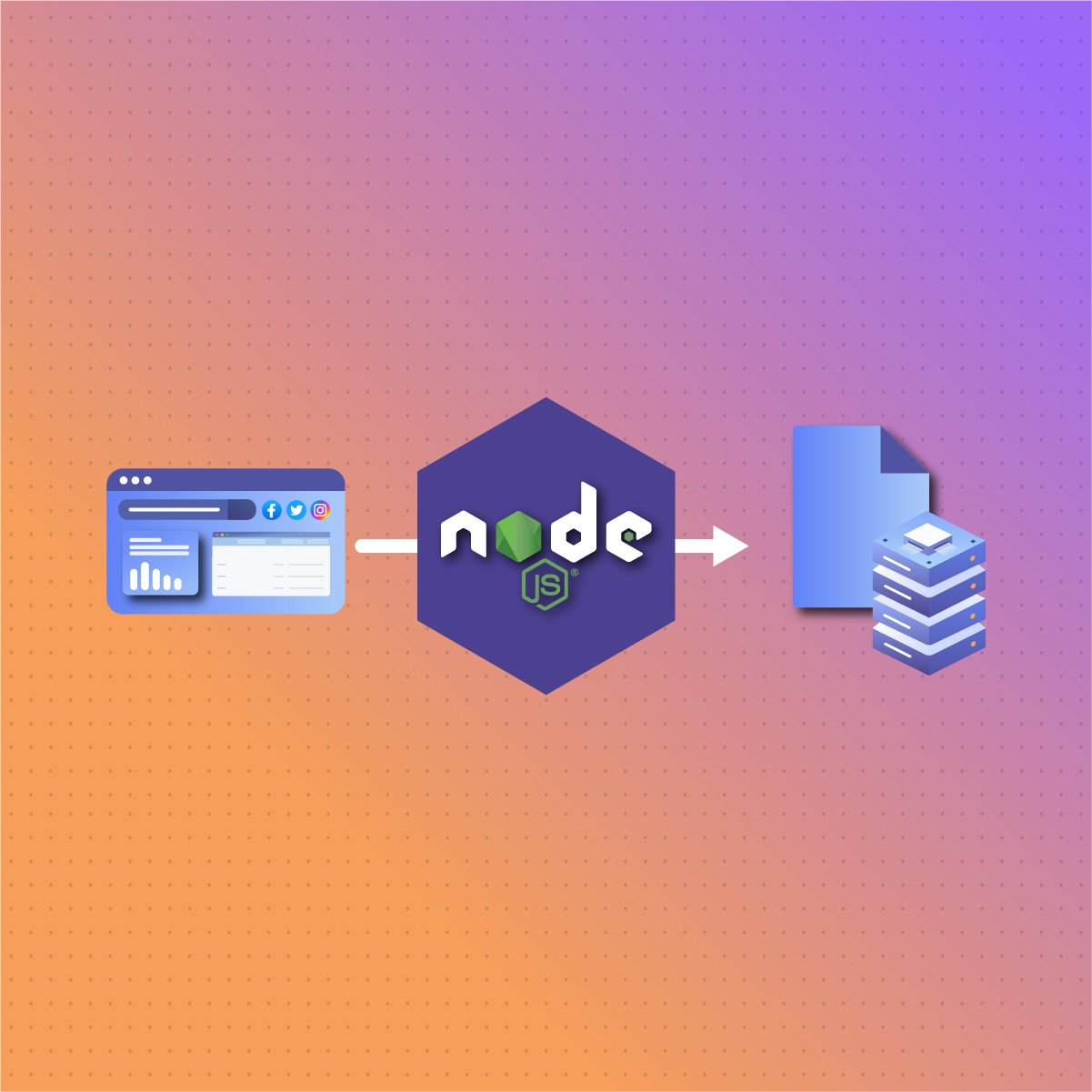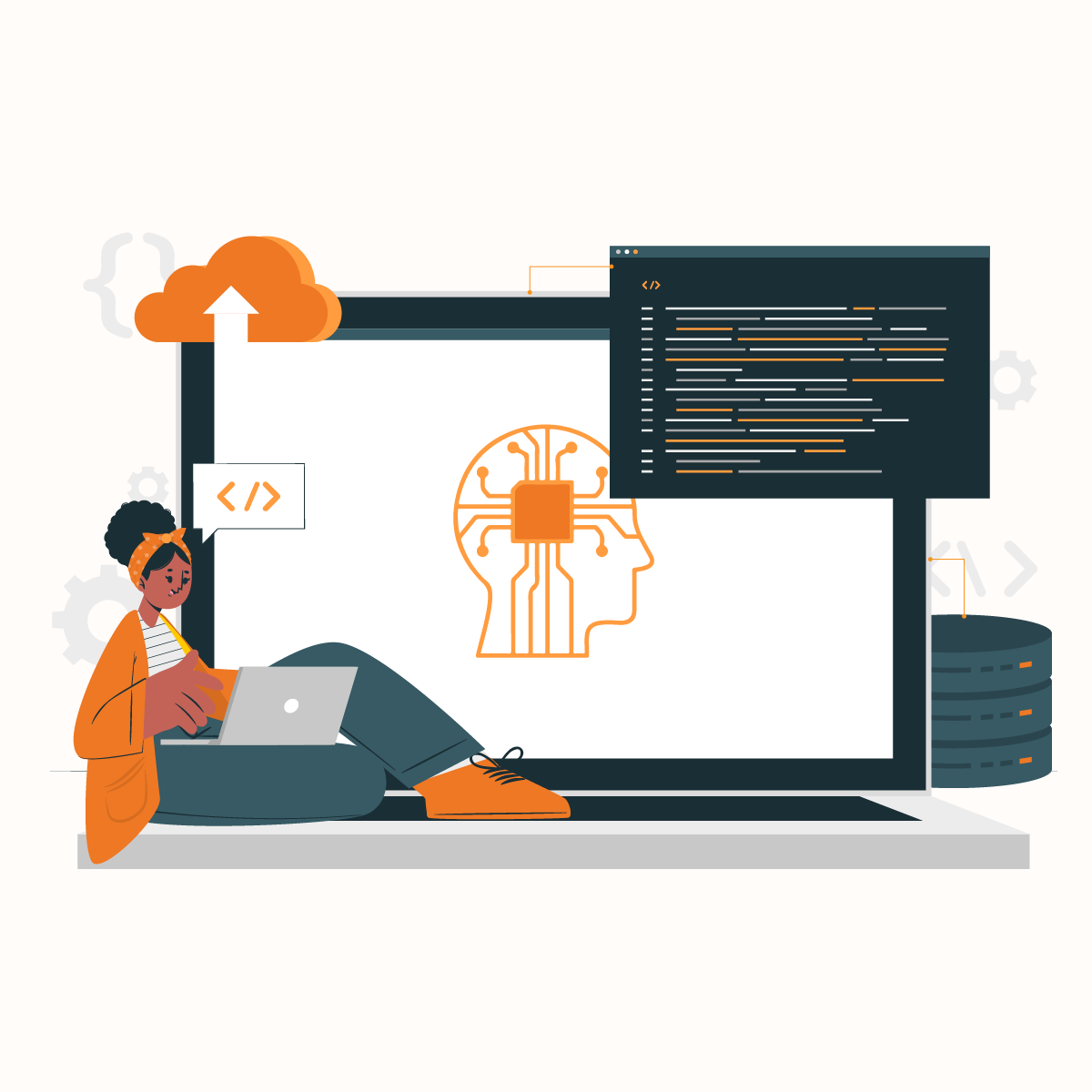Introduction
The capacity to acquire useful information from the internet is a skill that can define success in a variety of fields. This practice, known as web scraping, has become essential for companies, researchers, and individuals seeking actionable insights, competitive advantages, and a greater understanding of their particular industries.
Headless web scraping is the process of retrieving and collecting information from websites without displaying the content in a web browser. Headless scraping, as opposed to typical scraping methods that require a browser interface, occurs in the background, making it faster, more efficient, and less resource-intensive.
Headless scraping has various benefits, including faster data extraction, lower bandwidth use, and the flexibility to function in a headless server environment. This technology is especially useful for large scale data extraction operations since it provides a streamlined and automated solution for firms in a variety of industries.
We will look at the complexities of headless web scraping, the significance of this technique, and how NetNut has positioned itself as a valuable tool for web scraping.
Understanding Headless Web Scraping
In this modern landscape of web scraping, the shift towards headless scraping marks a significant leap forward in terms of efficiency, speed, and resource optimization. To appreciate the transformative nature of headless web scraping, it’s crucial to first grasp the distinctions between traditional scraping methods and the innovative approach offered by headless scraping.
Traditional Scraping vs. Headless Scraping
Traditional web scraping involves interacting with and retrieving data from websites using a browser interface. This method employs a visible browser window, which is often maintained by automation tools such as Selenium or Puppeteer. The browser renders the web page, executes JavaScript, and retrieves the desired information. While effective, traditional scraping can be resource-intensive, slower, and more susceptible to detection by websites.
Headless web scraping, on the other hand, operates without the need for a visible browser interface. It fetches data in the background, executing scripts and interacting with websites without rendering the content. This not only accelerates the scraping process but also consumes fewer resources, making it an efficient and streamlined approach. Headless scraping is particularly advantageous when dealing with large-scale data extraction tasks, as it minimizes the impact on system resources.
Perks of Headless Scraping
- Speed: Headless scraping significantly enhances the speed of data retrieval compared to traditional methods. By eliminating the need for rendering web pages, the process becomes faster and more agile. This is especially crucial in time-sensitive scenarios where real-time data is of the essence.
- Efficiency: Headless scraping streamlines the entire data extraction process. With no visual interface to slow it down, the automated scripts can navigate through websites swiftly and extract the required information with precision. This increased efficiency translates into quicker turnaround times for scraping tasks.
- Resource Optimization: One of the key advantages of headless scraping is its resource optimization. Traditional scraping often requires substantial computing power to handle browser rendering, which can be resource-intensive. Headless scraping operates in the background, consuming fewer resources and enabling users to run multiple scraping tasks simultaneously without overburdening their systems.
- Anonymity and Reduced Blocks: Headless scraping, particularly when coupled with solutions like NetNut, offers enhanced anonymity. By operating in the background without rendering, it reduces the likelihood of websites detecting and blocking scraping activities. This makes headless scraping a more sustainable and reliable solution for users engaged in large-scale data extraction.
The perks attached to headless web scraping make it an indispensable tool for businesses and individuals alike.
NetNut’s Role in Headless Web Scraping
NetNut stands out as a viable force in web scraping, offering a comprehensive solution that goes beyond the conventional approaches. As a provider of headless web scraping services, NetNut has positioned itself as a game-changer, addressing the challenges users face in terms of speed, efficiency, and anonymity.
What sets NetNut apart is its innovative infrastructure, which allows users to connect to the web through a diverse pool of residential IPs. This strategic approach ensures that web scraping activities appear organic and indistinguishable from genuine user behavior. The result is a seamless and efficient data extraction process that enables users to stay ahead in an environment where timely and accurate information is of paramount importance.
How NetNut Enhances Headless Web Scraping Process
NetNut aids efficient Headless web scraping by;
- Residential IPs for Anonymity: NetNut’s infrastructure revolves around the utilization of residential IPs, providing users with a level of anonymity that is crucial in the world of web scraping. By masking the true identity of the scraper and simulating genuine user behavior, NetNut significantly reduces the risk of being detected and blocked by websites.
- Efficient Data Retrieval: NetNut’s headless scraping solutions are designed with a focus on efficiency. By eliminating the need for a visible browser interface, the scraping process becomes faster and more streamlined. This efficiency is particularly valuable for users engaged in large-scale data extraction tasks, enabling them to retrieve information with unparalleled speed.
- Scalability for Varied Needs: NetNut understands that the data extraction requirements of users vary. Whether scraping data from a single website or multiple sources simultaneously, NetNut’s infrastructure is scalable to accommodate diverse needs. This scalability ensures that users can leverage the platform for projects of any scale, from small-scale research to enterprise-level data extraction.
- Global Reach for Geographically Restricted Content: With servers strategically located around the world, NetNut provides users with access to geographically restricted content. This global reach is particularly beneficial for businesses and researchers with international data requirements, offering a versatile solution for extracting insights from various regions.
NetNut’s commitment to user anonymity, efficiency, and scalability positions it as a leading choice for those looking to master headless web scraping and extract valuable data in an ever-changing digital landscape.
Integrating NetNut for Headless Web Scraping
Embarking on Headless web scraping with NetNut is a straightforward and empowering experience. Here, we’ll guide you through the step-by-step process of getting started with NetNut – from signing up to seamlessly incorporating it into your Headless web scraping scripts or tools, and finally, customizing configurations to meet your specific scraping needs. The Sign-up process involves:
- Open your preferred web browser and navigate to the official NetNut website.
- Locate and click the “Create Account” button.
- Enter the requested information, such as your email address, password, and any additional details.
- Confirm your email address by clicking on the confirmation link issued to your registered email address.
- Once verified, log in to your newly created NetNut account using your credentials.
After signing up on NetNut, the next process is to integrate it into your Headless web scraping scripts. The steps to get it done involve:
- Explore NetNut’s API documentation, usually available in the user dashboard. Familiarize yourself with the available endpoints and functionalities.
- Generate your API key within the NetNut dashboard. This key is crucial for authenticating your requests to the NetNut service.
- Integrate NetNut into your Headless web scraping scripts or tools by adding the necessary code snippets. This usually involves sending HTTP requests to NetNut’s API endpoints with your API key for authentication.
- Adjust your scraping scripts or tools to utilize NetNut’s residential proxies. This may involve specifying proxy settings within your code or tool configuration.
By following these steps, you’ll easily integrate NetNut into your Headless web scraping workflow, harnessing the power of headless scraping with residential IPs. The customization options provided by NetNut ensure that your Headless scraping endeavors are not only efficient but also tailored to your specific data extraction needs.
Advanced Techniques and Best Practices For Headless Web Scraping
Once you’ve familiarized yourself with the basics of headless web scraping and integrated NetNut into your toolkit, it’s time to explore advanced techniques and best practices. The advanced techniques commonly used involve;
Optimize Request Frequency
Fine-tune the frequency of your requests to avoid overloading servers and minimize the risk of getting blocked. This aids in balancing the pace of your scraping requests. Also, it helps maintain a low profile, reducing the likelihood of being flagged as suspicious activity.
Rotate Residential IPs Strategically
Another pro method is to implement a rotation strategy for residential IPs to simulate diverse user behavior. Doing this regularly enhances anonymity and reduces the chances of being detected by websites, ensuring uninterrupted scraping activities.
Handle CAPTCHAs Effectively
To have a smooth Headless web scraping experience, implement CAPTCHA-solving techniques, such as using CAPTCHA-solving services or integrating human-solving mechanisms when required. This is an efficient way of handling CAPTCHAs. It prevents disruptions in your scraping workflow and ensures a smooth data extraction process.
Respect Robots.txt Rules
In addition, adhere to the guidelines set in a website’s robots.txt file to respect its scraping policies. Respecting robots.txt rules maintains ethical scraping practices and reduces the risk of being blocked by websites.
By incorporating these advanced techniques and best practices into your headless web scraping endeavors with NetNut, you’ll not only optimize your data extraction process but also navigate potential challenges with finesse. These strategies elevate your scraping capabilities, making your workflow more efficient, reliable, and adaptable to the ever-changing dynamics of web data.
Future Trends in Headless Web Scraping
As technology continues to advance, headless web scraping is poised for exciting developments. Let’s explore some upcoming trends and advancements in headless web scraping technology and discuss how NetNut is positioned to evolve with these trends.
Machine Learning and AI Integration
The integration of machine learning (ML) and artificial intelligence (AI) in web scraping will enhance the ability to recognize patterns, adapt to changes in website structures, and automate decision-making in scraping processes.
NetNut, with its scalability and efficient data retrieval, is well-positioned to integrate seamlessly with machine learning algorithms. ML models can leverage NetNut’s data to improve accuracy in recognizing patterns and making informed decisions during scraping tasks.
Browser Automation and Interaction Mimicry
Advancements in browser automation will enable more sophisticated interaction mimicry, allowing headless browsers to simulate user behavior with greater precision.
NetNut’s headless scraping solutions, coupled with its residential IPs, align with this trend by offering a level of interaction mimicry that closely resembles genuine user behavior. This enhances the platform’s ability to navigate websites with evolving anti-scraping measures.
Enhanced JavaScript Rendering
With an increasing reliance on JavaScript for website functionality, headless browsers will continue to evolve to provide more robust support for rendering dynamic content.
NetNut’s headless scraping capabilities, including efficient JavaScript rendering, align with this trend. The platform’s ability to handle dynamically loaded content ensures that users can extract data from modern websites that heavily rely on JavaScript.
Improved Anonymity and IP Rotation Techniques
As websites become more sophisticated in detecting scraping activities, there will be an increased focus on developing advanced anonymity and IP rotation techniques to evade detection.
NetNut, with its use of residential IPs and dynamic rotation strategies, is positioned to stay ahead of this trend. The platform’s commitment to anonymity ensures that users can navigate evolving anti-scraping measures, providing a robust solution for staying undetected.
Ethical Scraping and Compliance
With the growing emphasis on data privacy and ethical considerations, there will be an increased focus on tools and practices that promote ethical scraping and compliance with website policies.
NetNut’s commitment to ethical scraping practices and adherence to website policies align with this trend. The platform encourages users to respect robots.txt rules and provides the necessary features for maintaining ethical scraping standards.
As headless web scraping continues to evolve, NetNut stands at the forefront, ready to embrace these trends and advancements. By staying abreast of emerging trends and continuously innovating its platform, NetNut ensures that users can navigate the evolving landscape of web scraping with confidence and efficiency.
Conclusion
Mastering headless web scraping approach is a major change in the dynamic domain of online scraping. Business owners, researchers, and data enthusiasts are encouraged to explore the possibilities that mastering headless web scraping with NetNut presents. NetNut proxies provide a gateway to seamless data extraction, empowering users to stay ahead in their respective fields.
Whether you’re optimizing pricing strategies in e-commerce, conducting in-depth market research, enhancing algorithmic trading in finance, or ensuring the integrity of ad placements, NetNut proves to be a strategic ally. Its future-ready features align with emerging trends, ensuring that users are well-equipped to navigate the evolving challenges of web scraping technology.
Embark on the journey of mastering headless web scraping with NetNut, and unlock the full potential of data extraction in this digital age.
Frequently Asked Questions and Answers
What is headless web scraping, and how does it differ from traditional scraping?
Headless web scraping involves retrieving data from websites without a graphical user interface (GUI), optimizing speed and efficiency. Unlike traditional scraping, which uses a visible browser interface, headless scraping operates in the background, making it faster and more resource-efficient. NetNut enhances headless scraping by providing residential IPs for anonymity and global reach.
How does NetNut handle websites with CAPTCHAs, ensuring uninterrupted data extraction?
NetNut provides efficient CAPTCHA-solving mechanisms to handle challenges posed by CAPTCHAs. Users can integrate CAPTCHA-solving services or implement human-solving mechanisms when necessary. This ensures a seamless workflow, allowing users to navigate through CAPTCHAs without disruptions in their data extraction process.
Can NetNut be scaled for large-scale data extraction projects, and how does it ensure efficient data retrieval?
Yes, NetNut is designed to be highly scalable, accommodating projects of varying sizes. The platform ensures efficient data retrieval by leveraging its infrastructure, which includes strategically located servers and the use of residential IPs. This combination enables users to scale their scraping operations without sacrificing performance.







